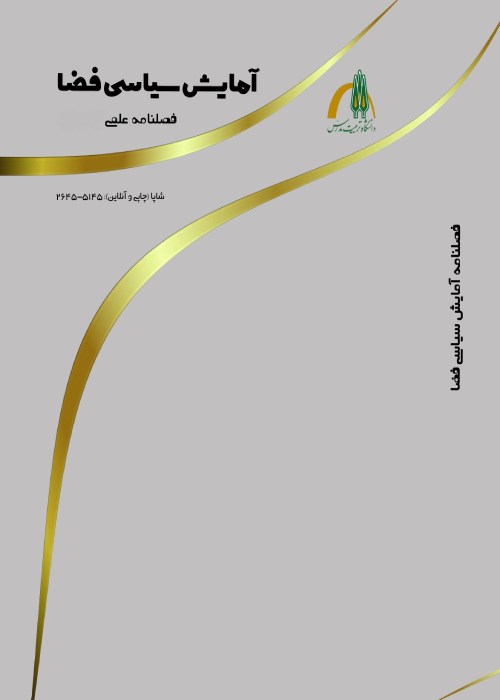Analysis of urban network and spatial distribution of population in urban centers of Tehran province
Cities are the most important man-made phenomena in the land that play a major role in the development or non-development of regions and areas. According to the statistics provided by the United Nations, more than 50% of people live in cities and the urban population growth rate is 4 times. The population is rural. Based on this, the study of cities is important because they are places where people and activities are loaded. Demographic changes in recent years in the country have caused the growth of the urban population to be uncoordinated at different times and the distribution of its growth in different cities of the country is uneven and the growth trend is increasing and fast. The growth of the country's urban population and the lack of attention to the urban network and the distribution of urban centers and centers in the territory on the one hand and the rapid growth of urbanization on the other hand have led to fragmentation and incoherence in the spatial structure of the country. Migration and the growing trend of urbanization and economic-social and political developments in recent decades of Tehran province have been the most important factors in creating an unbalanced pattern of the urban network. Nowadays, the population growth of cities along with their socio-economic issues is a new form of city and urbanism and It has created urbanism. Organizing and balancing the space is one of the key issues in the field of urban planning. Bigger cities exert their dominance over smaller cities by absorbing and concentrating more surplus. The continuation of these conditions causes the formation of imbalance in the spatial distribution of cities and the emergence of problems caused by congestion and congestion in cities and the evacuation of other places. This article aims to provide solutions for balancing by examining and analyzing the urban network in Tehran province. to present.
Therefore, the method used in this research is descriptive-analytical, using rank-size models, Lorenz curve and entropy coefficient, as well as for quantitative and qualitative analysis using Excel software to investigate and analyze the urban network of the province. Tehran has paid.
The results of the findings show that many industrial and service activities are concentrated in Tehran province, especially Tehran metropolis, due to its administrative, political, economic situation and the lack of spatial justice and land development policies in Iran. The amount of concentration in the country is higher in Tehran province and among the cities of Tehran province, in Tehran metropolis. The presence of concentration causes migration, and urbanization in Tehran province has gained wider dimensions with the spread of Tehran metropolis and the creation of Tehran metropolitan area. So that this province has medium, small and rural cities. While in 1355 it had only 6 small cities. Transformation in metropolitan areas is a product of decentralization, which can be called the movement of rupture. The basis of the formation of the metropolitan area is directly related to the level of communication technologies such as railway lines and highways. Because by facilitating travel to and from Tehran along its communication axes, they have been created in the form of a cluster with the center of Tehran metropolis. Therefore, the spatial structure of the urban network of Tehran province is based on the center-periphery development pattern, and the lack of proportional distribution of population and services at the level of the region has created an unbalanced network system and has created a kind of divergence and lack of integration in the region. Because none of the cities in the metropolitan region of Tehran, even the metropolitan city of Tehran, have a suitable position in the field of production competition at the national and especially international level. While this type of city accumulation and urbanization has brought many natural and human risks and is an obstacle to sustainable development. The increase in urban population in Tehran province originates from the scattered surface of Tehran metropolis, and the concentration of urban population in the western part of the province is more in accordance with the communication routes than in other directions. Although medium-sized cities have repaired the spatial discontinuity in the urban network of the province to some extent, according to the rank-size model, the distance between the metropolis of Tehran and other cities of the province is still very large and there is no balance in the urban network of the province. In addition, the urban population has settled not in a uniform manner but in a cluster around the metropolitan city of Tehran and in the next order of medium cities.
- حق عضویت دریافتی صرف حمایت از نشریات عضو و نگهداری، تکمیل و توسعه مگیران میشود.
- پرداخت حق اشتراک و دانلود مقالات اجازه بازنشر آن در سایر رسانههای چاپی و دیجیتال را به کاربر نمیدهد.



